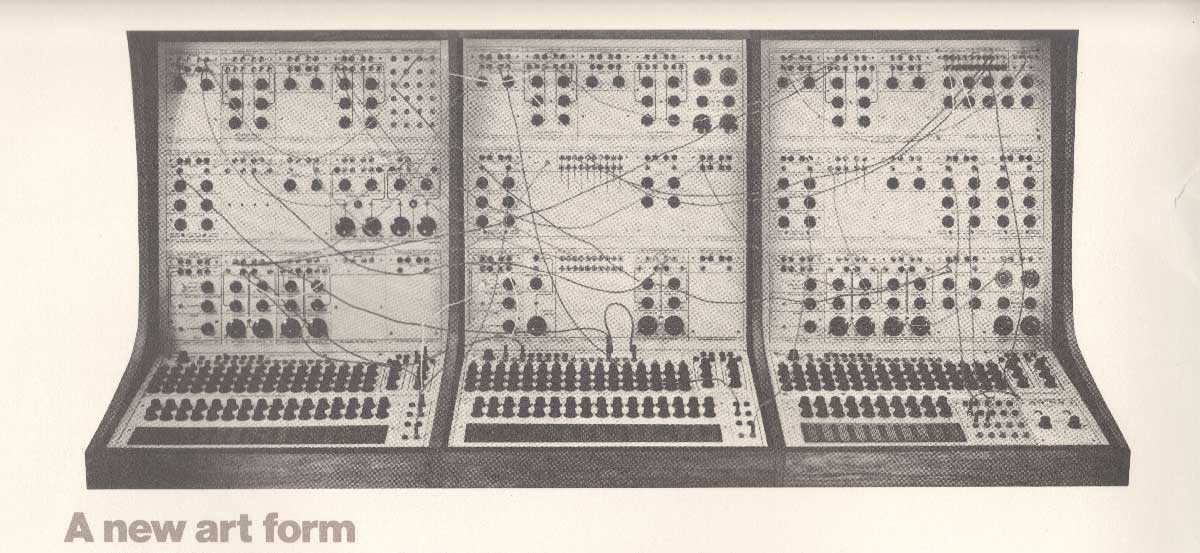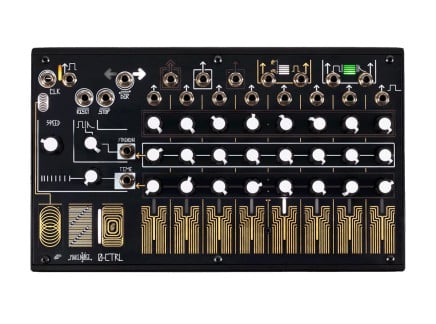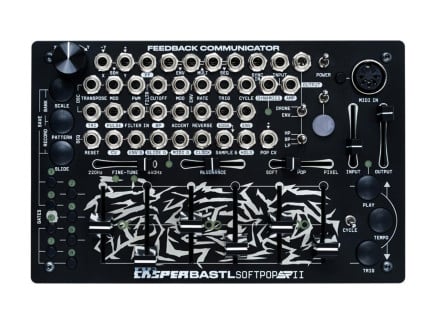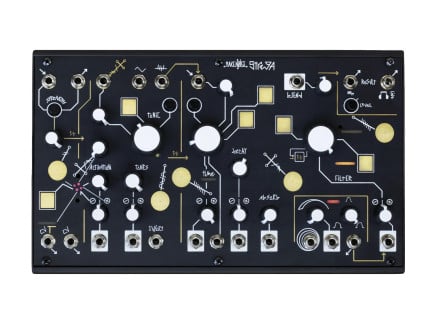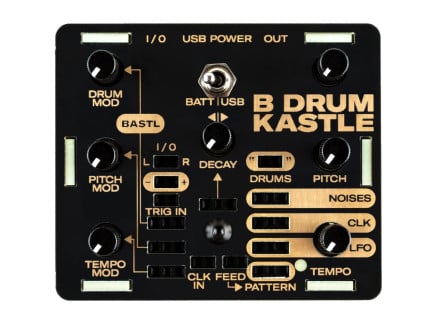If you're into modular synthesizers, you should be familiar—and if you're into other new electronic music production gear or hardware, odds are that you've seen these terms crop up a lot in recent years. Many new desktop devices, effect pedals, and even keyboard synthesizers now sport CV/Gate connectivity in addition to more typical audio and MIDI I/O...so what is CV/Gate? What is control voltage for?
Often, online articles seem to describe CV/Gate as though they're an outdated way of working with vintage synths, or an esoteric means of control in modular synths...but they're much more than just that. With the resurgence of interest in analog gear, it's become common for CV/Gate inputs and outputs to find their way onto MIDI controllers, sequencers, drum machines, all sorts of synthesizers, effect pedals, and more...so in this article, we're going to discuss what the CV/Gate connections on your favorite gear are meant to do, how you can use them, and where they came from altogether. Buckle up!
Where Did CV/Gate Come From?
I'm not going to go into a whole music history lesson here—but it's worth taking a moment to do a light recap about the advent of modular synthesizers. If you want to get deeper into this history, I'd recommend checking out our articles Who Invented the Synthesizer? and What is a Modular Synthesizer? for greater context. For now, though, in order to understand where CV/Gate came from, it's important to have a basic understanding of how electronic music worked before the modular synthesizer as we know it was invented.
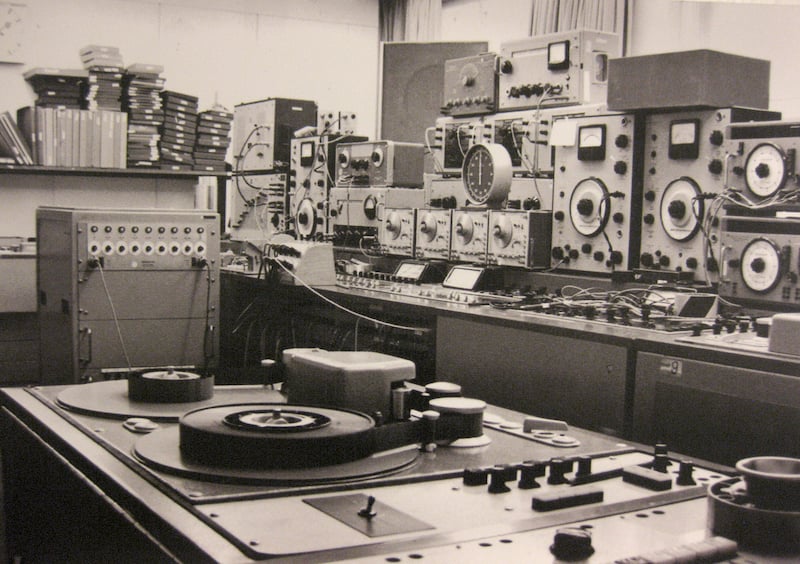
In the days leading up to the invention of the modular synthesizer, it was common for electronic music studios to be entirely without "musical instruments" in the traditional sense. Because there were so few dedicated electronic instruments at the time, these studios instead often instead contained scientific test equipment—devices which could be coaxed into producing and modifying sound, despite the fact that they weren't designed for musical purposes. These devices included test oscillators (simple tone generators), noise sources, filters, equalizers, and so on. To create sounds, composers could chain several of these devices together—using a filter to process the sound of an oscillator, for instance—and then record the resulting sound onto magentic tape using reel-to-reel tape recorders. From there, the process of composition involved a lot of tape editing: cutting and splicing tape together, reversing tape, playing it back at different speeds, re-recording edited sounds for further manipulation, and so on. It was a relatively tedious process, far removed from the immediacy of, say, playing a musical instrument. (See photo above for an idea of how one such studio, WDR in Cologne, was laid out.)
As time went on, many composers grew weary of this lack of immediacy. As such, they started to reimagine this process altogether: many imagined that making the transition from repurposed test equipment to purpose-built tools could significantly streamline the process of composing electronic music. Seemingly in parallel with one another, several designer/composer teams (or multi-talented individuals) came up with similar solutions to this problem, hinging on the idea of voltage control.
First pioneered by inventors such as Harald Bode and Hugh le Caine and later streamlined by instrument makers like Bob Moog and Don Buchla, voltage control was a concept by which individual purpose-built devices could be used to influence one another's behavior. This evolved in conjunction with their respective attempts to build a device that could function as a sort of all-in-one electronic music studio. Moog and Buchla's early instruments aren't dissimilar to the sorts of tools you would find in older electronic music studios—that is to say, they contained tools like oscillators, filters, etc. However, rather than each of these being individual entirely distinct devices, these tools were provided a standardized size and power supply format, allowing them to be configured into a single, consolidated cabinet. Check out the photos below: you'll notice that both Moog and Buchla's early instruments are comprised of multiple individual modules in a single cabinet.
Concepts of audio routing in these instruments was similar to using test equipment—but as stated above, the revolutionary concept at play was the idea of control voltage. Control voltages (CV) were analog signals carried over patch cables that could allow dedicated CV-producing modules (like LFOs, sequencers, envelopes, random voltage generators, etc.) to influence the behavior of other modules—be they sound sources, sound modifiers, or even other CV sources. This meant that, for instance, you could use a sequencer to create a specific sequence of pitches in real time, or that you could use an envelope to create an automated filter sweep. Previously, tasks like these would've required multiple recordings, tape splices, and/or manual changes of knob and switch settings...but the modular synthesizer made it possible to automate these types of changes and hear the results in real time for the first time ever. That was a big deal—and for many, it changed the way that electronic music worked altogether.
What Happened to CV/Gate?
In the pre-MIDI world we've been describing, CV and Gate signals were the most standard way of sending control/performance information between multiple electronic devices. Control voltages typically were used to automate some specific parameter of the sound—to modify the pitch, brightness, loudness, and so on. Gates were timing signals used to initiate events, such as the beginnings of notes, switching to new steps on a sequencer, etc.
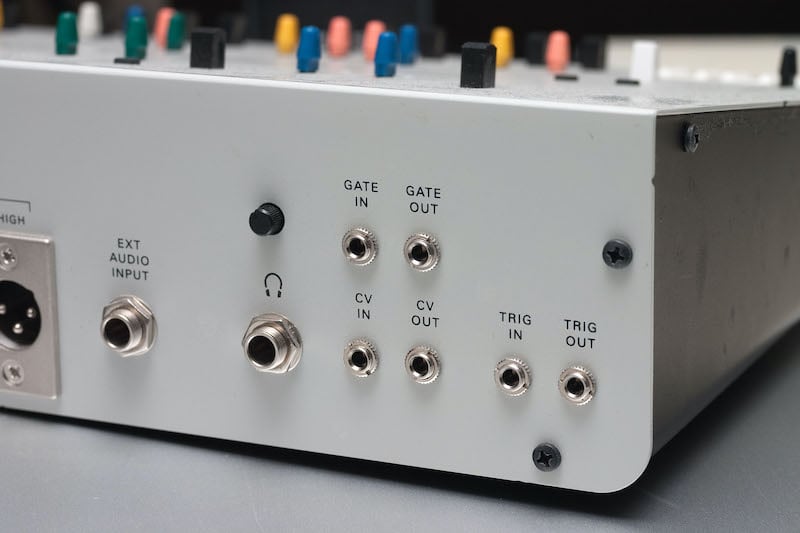 CV/Gate I/O on Korg's reissue of the ARP Odyssey
CV/Gate I/O on Korg's reissue of the ARP Odyssey
This standard continued even as synthesizers evolved from modular designs to self-contained structures with keyboards. In fact, it was quite common in the heyday of analog monosynths (like the Minimoog, ARP Odyssey, or Sequential Pro-One) for the keyboard to feature CV and Gate inputs and/or outputs. Typically, CV and Gate outputs translated keypresses on a keyboard into voltages that could be used to control another synth's oscillators and envelopes, though of course, other control routing options were also possible.
In many ways, this method of communicating control/performance information is quite elegant...but when attempting to communicate dense combinations of performance information or attempting to route information to a large number of sound generators, it becomes quite cumbersome. So as keyboard synthesizers became increasingly polyphonic, CV/Gate were all but abandoned in favor of alternative digital communication protocols, which made it much simpler to transmit a large amount of information over a single cable. Ultimately, MIDI took over as the prevalent way of interconnecting distinct musical devices.
However, given the resurgence of interest in analog synthesizers over the last couple of decades, it has become increasingly common to see CV/Gate connections on all sorts of devices, from synths and drum machines to keyboard controllers, effect pedals, and much more. In fact, it's common to see CV/Gate and MIDI connections alongside one another—and while MIDI is still a perfectly solid way of interconnecting compatible devices, it's not the only option out there. Let's talk now about some places you're likely to see CV/Gate connections, and how you can use them!
CV/Gate on Modern Gear
CV and Gate aren't just for vintage analog synths anymore—in fact, you'll find CV/Gate options on everything from Teenage Engineering Pocket Operators to Moog synths, effect pedals, and MIDI controllers. So, what are some of our favorite CV/Gate controllers, and how can you use them?
Arturia's Keystep series are some of the most fun/flexible/fully-featured CV/Gate controllers out there. Each model features dedicated CV/Gate outputs, which make it possible to use the keyboard, arpeggiator, and built-in sequencer to send pitch and timing info to modular synths, desktop semi-modular devices, or anything else your heart may desire. Just plug your Keystep's Pitch CV output into another device's 1V/Oct input (the input used to control pitch on most synthesizers), and the Gate into an envelope's trigger/gate inputs and you're ready to use the keystep as a keyboard/arpeggiator/sequencer. You can even use the sync input/output to synchronize external sequencers—these I/O ports expect and produce clocks, continuous streams of gates that can be used to establish a common tempo between connected devices.
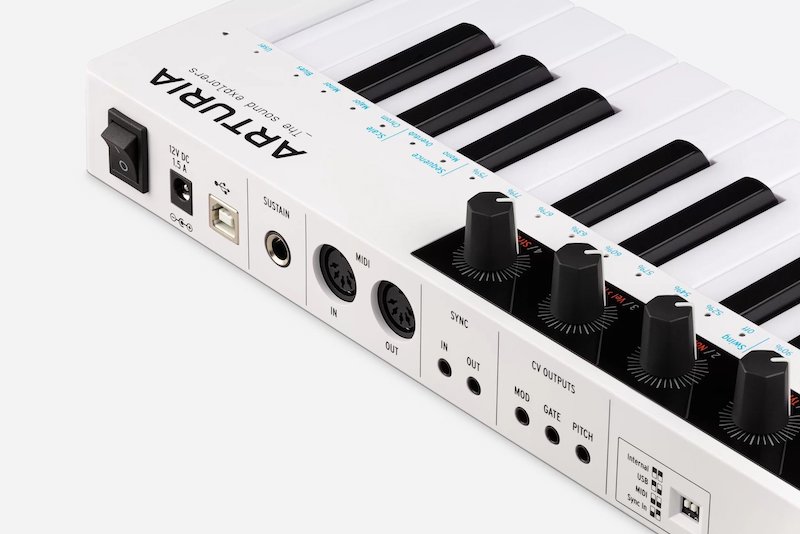
The Keystep series also feature "mod" CV outputs: these produce a 0–5V voltage based on the current setting of the mod touch strip, great for adding performative control of other musical parameters: filter sweeps, delay time, or anything else that has a CV input. This can be particularly fun for controlling effect pedals via their expression pedal inputs—be sure to check out our article about using CV with effect pedals for more info on how best to make that work.
The Keystep 37 is a personal favorite among Arturia's "step" products—it has some really excellent features for creating "strummed" chords, one-shot arpeggios, and much more. For more complex setups, the Keystep Pro is also awesome—it actually features quite an array of CV/Gate outputs, great for controlling multiple synthesizers, triggering analog drum modules, and much more. Of course, if you're not into keyboards, the Beatstep Pro can provide similar functionality with a pad-based user interface.
Korg's SQ-1 sequencer is another long-standing favorite affordable CV/Gate controller. With two sets of CV/Gate outputs, it's a powerful and performable sequencer for all sorts of gear. With a ton of options for sequence step order, step skipping, quantization, and more, it's easy to treat the SQ-1 as a hands-on performance controller for sequenced music. Pair with the right synth or effects and the SQ-1 is sure to be a blast.
There's no end to the number of CV/Gate capable controllers out there...and in fact, they can come in many different formats, from companies of vastly different sizes. Electro-Harmonix's 8-Step Program is a pedal-format CV sequencer with a wide range of internal options; Make Noise's 0-Ctrl is a standalone touchplate keyboard/sequencer that turns even the simplest sequences into something dynamic, unpredictable, and playable. Torso's T-1 is a multi-track algorithmic sequencer designed to help you take a step back in your compositional process and watch simple rules create new, unexpected sequences that unfold before you in time. And these are just the tip of the iceberg!
The other end of the spectrum is, of course, what types of devices you can use CV to control...and this is much more open-ended altogether. These days, there are seemingly countless desktop semi-modular synthesizers, effect pedals with CV input options, even CV to MIDI converters which can turn your CV into a way of controlling your DAW or MIDI-controllable hardware; again, the possibilities are seemingly endless.
Bringing It All Together
One of the most exciting aspects of the increasing ubiquity of CV/Gate I/O on music gear is that these signals don't have a specific musical meaning: they can be used to control any aspect of any device that has CV inputs (of which there are seemingly countless options). For instance, in the video above, Wes does a particularly interesting trick using the Keystep's CV/Gate outputs to change the types of sounds produced by a Bastl Kastle Drum. This isn't the "intended use" of a keyboard pitch CV output—usually you'd use it to play notes on a monosynth—but it is a creative way of re-mapping the keyboard to do something it normally wouldn't. And personally, I find that quite exciting.

The greatest thing about CV/Gate is that it's so universal and so immediate. You don't have to spend time configuring MIDI CCs, mapping controls, etc.—you can simply plug in a cable and immediately see what happens. And given how many CV/Gate controllers there are out there and how many CV/Gate-capable synths there are, this reminds me of one of my favorite aspects of electronic instruments altogether: it's very possible to choose a sound production method that feels exciting and personal to you, as well as a way of interacting with that sound production method that feels exciting and personal to you. Add a Keystep to your Make Noise Strega; add a 0-Ctrl to your Softpop II; add an SQ-1 to your Bastl Kastle—at the end of the day, it's quite easy to come up with a performance setup that is yours and yours alone.
So if you're the type of musician looking to develop their own personal sound (and who isn't?), then go pick up some patch cables and see what you can do with the CV/Gate connections on your gear.

